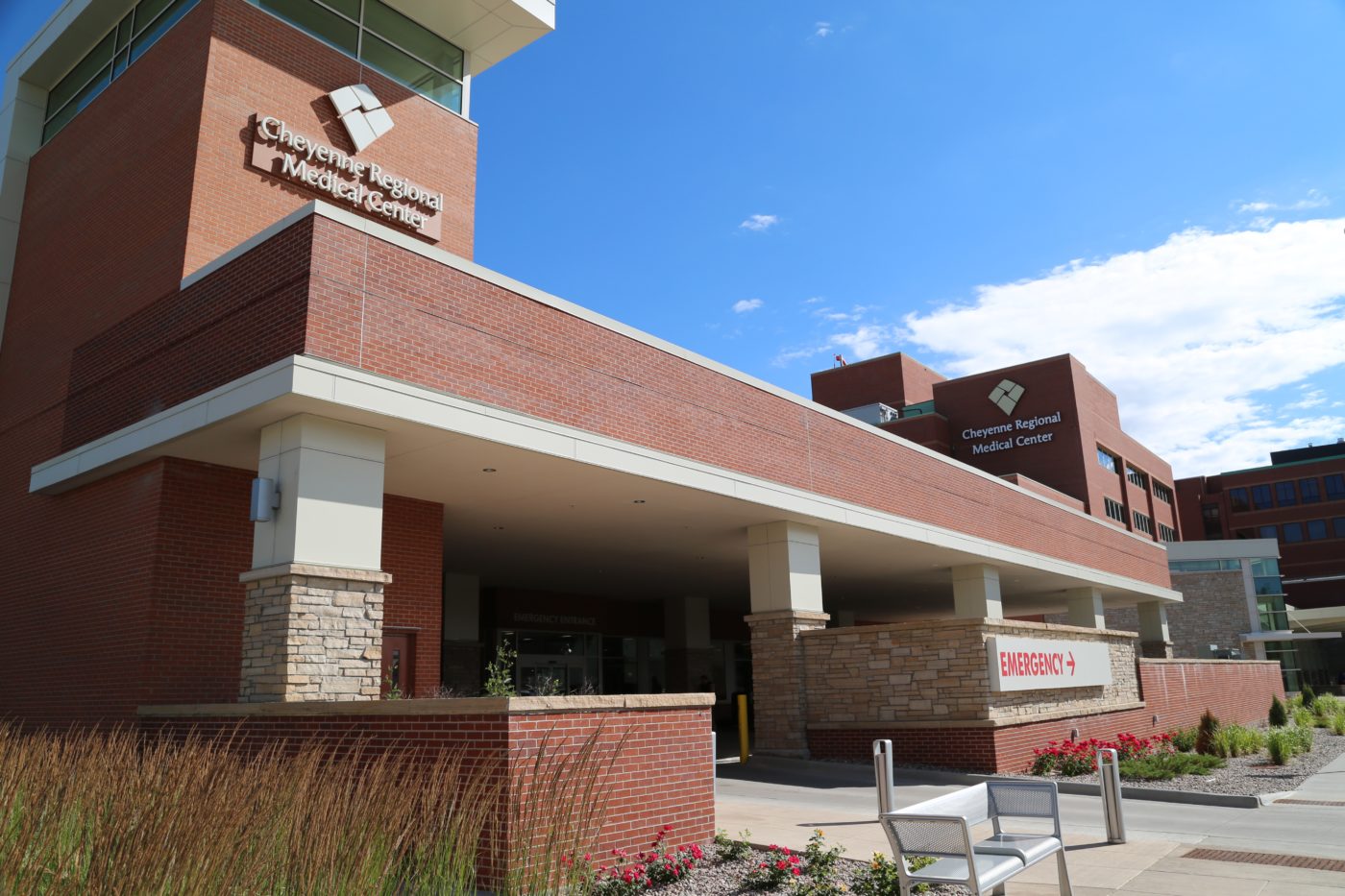
CRMC 11-1-20
Cheyenne Regional Medical Center officials announced today that they are reinstating the hospital’s “no visitors” policy effective November 1 at 7 p.m.
“Due to the recent surge in community spread of COVID-19 in Laramie County and due to the spike in patients at CRMC being treated for COVID-19 we are compelled to reinstate our ‘no-visitors’ policy for the protection of our patients and staff,” said Tim Thornell, CRMC’s president and chief executive officer.
Below are specifics of the policy, which apply to all CRMC campuses, the medical office building attached to CRMC and all the hospital’s affiliated medical clinics.
No visitors are allowed except in the following instances. In those instances, visiting hours are from 7 a.m. to 7 p.m.:
- Maternity: One designated visitor for duration of patient’s stay.
- Neonatal Intensive Care Unit: Two parents or guardians are permitted per 24-hour period.
- Pediatric patients (under the age of 18): Two parents or guardians can be designated, but only one parent or guardian can visit at a time per 24-hour period.
- Special-needs patients (with a medical or behavioral disability): One caregiver is allowed per 24-hour period.
- End-of-life patients: Two visitors are allowed.
- Outpatient procedures: If necessary, one person is allowed to accompany a patient for support.
- No visitors under the age of 16 are allowed. (If a patient comes to the emergency department with a minor child, the child will be allowed to remain with the patient if there is no other family member present to care for the child.)
In addition:
- Visitors are required to provide their own face covering and must wear it for their entire visit, including in patient rooms and in all common areas.
- Visitors must practice proper hand hygiene by washing with soap and water or using hand sanitizer.
- Upon entry, visitors will be screened for travel history, temperature, cough, shortness of breath, sore throat and exposure to COVID-19.
- Visitors should enter and exit through the designated patient and visitor entrance/exit door. (Main Hospital: located in the south parking garage on the corner of 23rd St. and House Ave. East Campus: located at the main entry on the south side of the building.)
- No one who is COVID-19 positive, being tested for COVID-19 or is symptomatic will be allowed to visit.
As of Friday morning, CRMC was caring for a total of 29 COVID-positive patients (22 COVID-positive patients on its COVID-19 designated treatment unit and another seven critically ill COVID-positive patients in its intensive care unit).
“The number of COVID-positive patients we are caring for has more than doubled over the past two weeks,” said Jeff Chapman, MD, CRMC’s chief medical officer.
CRMC continues to offer elective diagnostic and surgical procedures. Its emergency department also continues to be open around the clock as usual to care for anyone with a medical emergency.
“We want to reassure our community that our hospital and health system are fully operational and that we continue to provide a full range of medical services,” Chapman said. “At this point in time, nothing in our health system has closed or shut down. But with the spike of positive COVID-19 cases in our community, we have to be prudent about how many people we let into our facilities who aren’t directly receiving medical care.”
Thornell said the “no-visitors” policy will remain in effect until there is a significant decline in local cases of COVID-19 and in the number of patients being treated at CRMC for COVID-19.
“Our staff and medical providers are doing an outstanding job of responding to this surge,” Thornell said. “But it’s our job to ensure they can do their work in as safe an environment as possible and that our patients aren’t put at an additional risk of being exposed to the novel coronavirus.”
Thornell encouraged all community members to help reduce the spread of COVID-19 by following public health safety guidelines:
- Stay home when you are sick (even if you just feel “a little sick”).
- Wear a face covering when you are inside any public place or can’t maintain a social distance of at least six feet.
- Maintain a social distance of at least six feet from others who are not part of your immediate household.
- Wash your hands frequently and avoid touching your face.
- Avoid gatherings of people from outside your immediate household.
- Get a flu shot.



